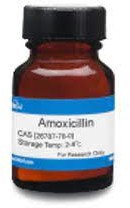Amoxicillin trihydrate 300 mg oral (PO) has been prescribed for a client with an oral infection. The medication is available in a liquid suspension that is available as 250 mg/5 mL. How many milliliters should the nurse administer?
Record your answer using a whole number.
6
4
1.2
5
The Correct Answer is A
Choice A rationale: This is the correct answer. It corresponds to 300 mg of the drug ((300x 5)/250).
Choice B rationale: This is incorrect because it is too low. It is the amount of milliliters that corresponds to 200 mg of amoxicillin trihydrate, which is less than the prescribed dose of 300 mg.
Choice C rationale: This is incorrect because it is too low. It is the amount of milliliters that corresponds to 60 mg of amoxicillin trihydrate, which is not enough to treat an oral infection.
Choice D rationale: This is incorrect because it is too low. It is the amount of milliliters that corresponds to 250 mg of amoxicillin trihydrate, which is less than the prescribed dose of 300 mg.
 |
Nursing Test Bank
Naxlex Comprehensive Predictor Exams
Related Questions
Correct Answer is D
Explanation
Choice A rationale: Activates the rapid response team (RRT) - Status epilepticus is a medical emergency requiring immediate intervention. Activating the rapid response team would ensure a prompt response to the situation.
Choice B rationale: Loosens any restrictive clothing - It is important for patient safety and comfort.
Choice C rationale: Places the client in a lateral position - This is a recommended positioning to prevent aspiration during a seizure.
Choice D rationale: Prepares to administer intravenous valproate acid - Valproic acid is not the first drug during epilepsy hence this action would necessitate immediate intervention.
Correct Answer is A
Explanation
Choice A rationale: This patient is likely experiencing hyperosmolar hyperglycemic state (HHS). Rapid administration of IV fluids is crucial to correct severe dehydration associated with HHS.
Choice B rationale: Routine insulin therapy and exercise might be components of diabetes management but wouldn't directly address the immediate concern of severe dehydration and high blood glucose.
Choice C rationale: Cardiac monitoring for potassium changes might be necessary but isn't the primary immediate intervention for HHS.
Choice D rationale: Administering a different antibiotic for the UTI is incorrect, because there is no evidence that the current antibiotic is ineffective or causing adverse effects. The UTI may have triggered the HHS, but it is not the main problem that needs to be addressed urgently.
Whether you are a student looking to ace your exams or a practicing nurse seeking to enhance your expertise , our nursing education contents will empower you with the confidence and competence to make a difference in the lives of patients and become a respected leader in the healthcare field.
Visit Naxlex, invest in your future and unlock endless possibilities with our unparalleled nursing education contents today
Report Wrong Answer on the Current Question
Do you disagree with the answer? If yes, what is your expected answer? Explain.
Kindly be descriptive with the issue you are facing.
